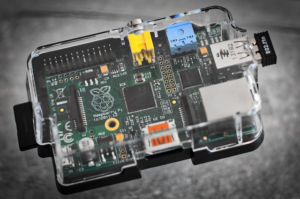
AlmaLinux is a top choice for an enterprise-grade Linux distribution. While it’s designed as a CentOS replacement, as the heyday of Red Hat’s CentOS falls further behind us, it’s clear that AlmaLinux is a great option for those starting fresh with servers, cloud solutions, workstations and more.
There are hundreds of Linux distributions, so what makes AlmaLinux different and attractive to Linux admins? It brings critical features to the table that are essential for enterprise environments. Some of these features include:
- Long-term stability and updates to maintain reliability.
- Standard security features, including SELinux, firewalld, etc.
- Optimized for performance at enterprise levels.
- “Forever free” with no licensing requirements.
- Community-owned.
Like other distributions trying to fill the hole left by CentOS, AlmaLinux maintains binary compatibility with Red Hat Enterprise Linux. The result is that anything that works with RHEL will work with AlmaLinux.
This article explores why AlmaLinux is an attractive solution for sysadmins looking to upgrade their environment and deploy a new enterprise-capable distribution.
Why Do You Need AlmaLinux?
Linux administrators can rely on AlmaLinux in test, dev and production environments without worrying about subscription agreements, licensing or the arbitrary whims of a corporation. The AlmaLinux community focuses on one thing: AlmaLinux.
Consider AlmaLinux for a wide variety of use cases, including:
- Academic settings
- Small businesses
- Cloud deployments
- Government and other security-oriented environments
However, AlmaLinux isn’t just for enterprise-grade servers. It’s an excellent choice for home users seeking a secure and straightforward daily use distribution. It’s also helpful for developers and other power users who need a stable and reliably patched system. There are even Raspberry Pi-specific builds for IoT solutions. And for you Windows admins, consider the AlmaLinux WSL version.
A Few Tech Specs
The official AlmaLinux wiki states that four architectures are supported. They are x86_64, aarch64, ppc64le and s390x.
General hardware specifications include:
- 64-bit processor
- 1 GB RAM minimum, 2 GB or more recommended
- 20 GB of free storage space recommended
The exact requirements vary by version, installation choice, platform, etc. Generally, you should do fine with any computer made in the last 10-15 years. Like other popular distributions, AlmaLinux offers a great deal of hardware flexibility.
Tell Me About AlmaLinux Versions
The AlmaLinux site makes various versions available, including the following:
- ISO files: For standard installations, including minimal, boot and DVD versions.
- Live distributions: Portable USB or DVD-based distributions used on any computer without overwriting its existing OS.
- Cloud images: Offers support for Amazon AWS, Google Cloud Platform, Microsoft Azure and more.
- Raspberry Pi: Support for these single-board computers designed for projects, education, IoT, etc.
- Container images: Offers Docker and OCI images.
- Vagrant boxes: Offers portable virtualization images.
- LXD/LXC: Supports this container management system.
- Windows Subsystem for Linux (WSL): A Linux environment running in Windows without virtualization.
Furthermore, AlmaLinux versions 8 and 9 are available, mapping to the equivalent RHEL 8 and RHEL 9 releases. Note that AlmaLinux 8 active support ended May 31, 2024, though security support continues until May 31, 2029. AlmaLinux 9 will be actively supported until May 31, 2027, with security support continuing until May 31, 2032.
AlmaLinux offers various GUI options, including GNOME, GNOME Mini, KDE, XFCE and MATE, providing users with familiar, comfortable and performant choices.
I Need Support
The AlmaLinux community offers a variety of support options, including a wiki containing links to many other support environments. Other options include chat features, forums, mailing lists and social media platforms. Whether you need information on builds, bugs or just want to chat, you’ll find the right links on the wiki.
If your organization feels more comfortable with commercial support, consider third-party solutions offered by TuxCare, Cybertrust Japan and OpenLogic. Links and more information are available on the AlmaLinux site.
But Why Not RHEL?
So why not just use Red Hat Enterprise Linux? RHEL requires registration and subscriptions to use the OS, adding complexity. There may also be a cost depending on which subscription and features you need. This is not a problem for some larger environments, but other enterprises, small businesses and users may want the additional freedom and flexibility associated with Linux since its inception.
Leaving CentOS Behind
One can hardly discuss AlmaLinux without bringing up the demise of CentOS and the continuing need for administrators to migrate their platforms to a different distribution. AlmaLinux exists to help meet that need. However, it’s time to leave this migration idea behind and let AlmaLinux stand on its own, not as a replacement choice, but as a solid enterprise Linux distribution in its own right.
If you are one of the (many) administrators who have yet to migrate from CentOS, AlmaLinux offers plenty of help. Investigate ELevate, a migration tool used with various distributions derived from RHEL, including CentOS, Oracle and more.
Wrap Up
Lots of attention has been given to IT groups that still need to migrate off CentOS and could use AlmaLinux. However, I suggest AlmaLinux to developers, power users and administrators looking for a new stable, secure Linux distribution for their workstations, on-premises servers and cloud deployments. Stop looking at AlmaLinux as a CentOS replacement and think of it as a powerful and viable enterprise Linux distribution.
Look into the AlmaLinux community, too. This community wants what’s best for the distribution rather than worrying about a larger corporate profile. There are plenty of contribution opportunities, too. Your organization can also become a member or sponsor by joining the AlmaLinux OS Foundation.
Download AlmaLinux and test it on your favorite virtualization platform or on extra hardware you might have available. Talk to your developers, cloud admins and other power users who could benefit from AlmaLinux’s features. Identify where this OS can replace RHEL or Windows to simplify your environment and reduce costs. Get started today!
YOUTUBE.COM/THENEWSTACK
Tech moves fast, don’t miss an episode. Subscribe to our YouTube
channel to stream all our podcasts, interviews, demos, and more.
Damon M. Garn owns Cogspinner Coaction, LLC, an IT writing and editing company. He authors articles, tutorials, and labs for today’s top IT industry leaders. He regularly contributes to The New Stack, TechTarget, and CompTIA. Damon has 20 years of…
Read more from Damon M. Garn







